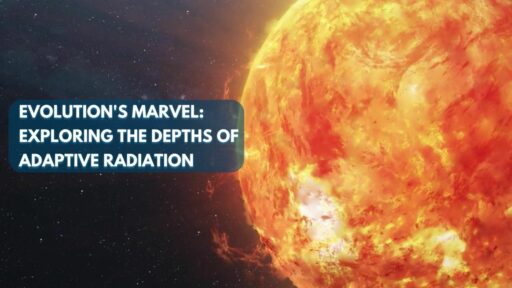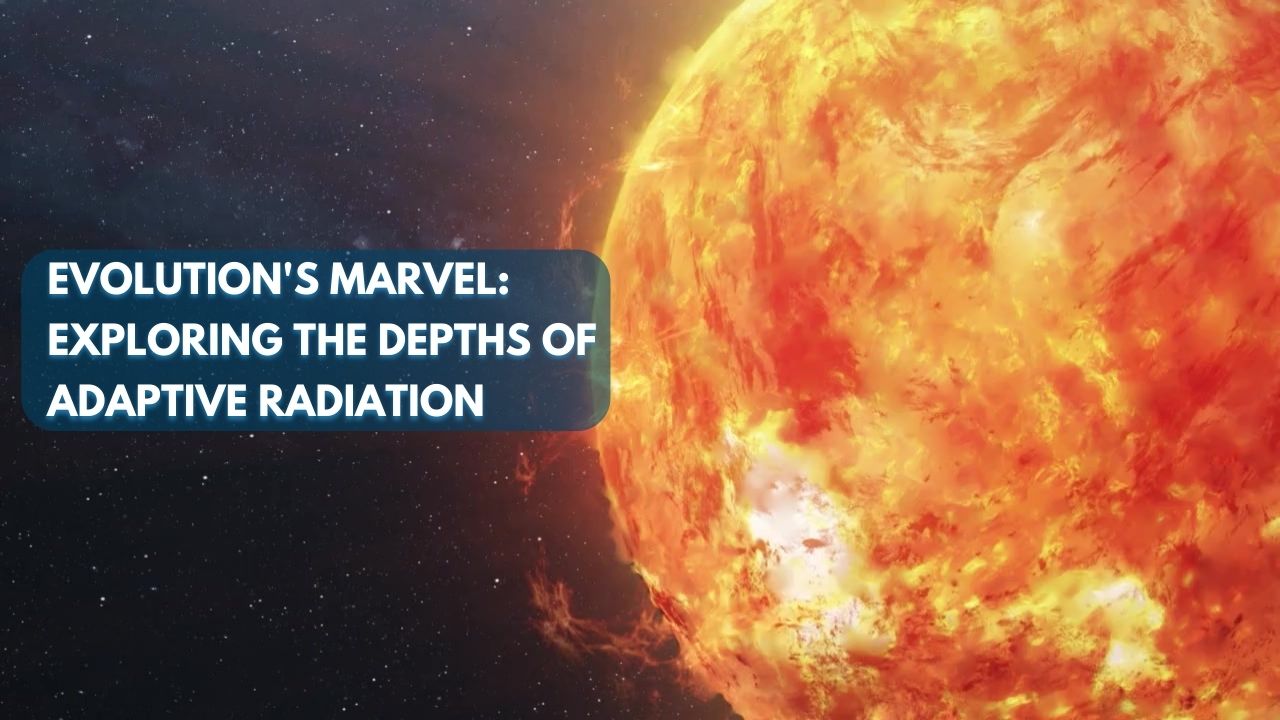Introduction to Evolution:
Start by explaining the concept of evolution, the central organizing principle of biology. Evolution refers to the process by which populations of organisms change over time through the gradual accumulation of heritable changes in traits. These changes occur in response to environmental pressures and are driven by mechanisms such as natural selection, genetic drift, mutation, and gene flow.
Historical context:
Provide a brief historical overview of the development of evolutionary theory. Discuss prominent individuals, such as Charles Darwin and Alfred Russel Wallace, who independently proposed the theory of natural selection as the mechanism driving evolution. Mention other scientists who contributed to our understanding of evolution, such as Gregor Mendel, whose work on genetics provided the basis for modern evolutionary theory.
Evidence for Evolution:
Highlight some of the major lines of evidence supporting the theory of evolution. This may include fossil evidence, comparative anatomy, embryology, biology, and molecular genetics. Explain how these lines of evidence come together to paint a comprehensive picture of the evolutionary history of life on Earth.
Importance of evolution:
Emphasize the profound importance of evolution as a unifying principle in biology. Evolutionary theory provides a framework for understanding the diversity of life, the relationships between organisms, and the processes that drive ecological and morphological change. It has practical applications in fields such as medicine, agriculture, conservation, and biotechnology.
Implications of Adaptive Radiation:
Finally, connect the concept of evolution to the topic of adaptive radiation. Explain how adaptive radiation represents one of the most striking examples of evolutionary diversification, where a single ancestral species gives rise to multiple descendant species that occupy a wide range of ecological niches. Emphasize that adaptive radiation is a direct result of evolutionary processes such as natural selection and genetic variation.
By providing this brief overview of evolution and its significance, readers will gain the background knowledge necessary to appreciate the complexity and importance of adaptive radiation in the broader context of evolutionary biology.
Understanding Adaptive Radiation
1. Define adaptive radiation and its importance in evolutionary biology:
- Adaptive radiation refers to the rapid diversification of a single ancestral species into different ecological regions. This diversification typically occurs when a group of organisms encounters new environmental opportunities or challenges, leading to the evolution of many new species adapted to exploit different resources or habitats.
- The importance of adaptive radiation in evolutionary biology lies in its role in generating biodiversity. It is a primary mechanism through which new species arise and occupy vacant ecological niches, contributing to ecosystem richness and complexity. By studying adaptive radiation, scientists can gain insight into the processes that drive speciation, adaptation, and ecological interactions.
2. Discuss the basic principles and mechanisms behind adaptive radiation:
Adaptive radiation operates by several key principles and mechanisms:
- Ecological opportunity: Adaptive radiation often occurs in environments with abundant resources or empty ecological niches, allowing organisms to exploit new habitats or food sources.
- Morphological innovation: Ancestral species may have traits that provide the basis for diversification into different forms adapted to different ecological roles. Evolutionary innovations, such as novel anatomical features or physiological adaptations, may facilitate adaptive radiation.
- Geographic isolation: Physical barriers or dispersal events can cause isolation of populations, allowing them to evolve independently and diversify into distinct species adapted to different environments.
- Natural selection: Adaptive radiation is ultimately driven by natural selection, because individuals with traits that increase their fitness in specific ecological niches are more likely to survive and reproduce, leading to the accumulation of adaptive traits in descendant species. It happens.
3. Highlight examples of adaptive radiation in different organisms:
- Darwin’s finches: Charles Darwin’s observations of finches on the Galapagos Islands provided one of the most famous examples of adaptive radiation. Different species of finches evolved specialized beak shapes and feeding behaviors to exploit different food sources such as seeds, insects, and cactus flowers.
- Hawaiian Honeycreepers: The Hawaiian Islands are home to a diverse group of honeycreepers that evolved from a common ancestor. These birds exhibit a remarkable range of bill shapes and sizes, allowing them to eat nectar, insects, and seeds in a variety of habitats.
- Cichlid fishes: Cichlids in the African Great Lakes have undergone extensive adaptive radiation, with hundreds of species exhibiting diverse body shapes, feeding strategies, and color patterns. This radiation is driven by ecological factors such as habitat diversity, resource availability, and interspecific competition.
1. An in-depth look at specific examples of adaptive radiation in different taxa:
Adaptive radiation has occurred in different taxonomic groups in the Tree of Life, resulting in diverse patterns of species diversification. Here are some examples of different taxes:
- Birds: Darwin’s finches in the Galapagos Islands, Hawaiian honeycreepers, and Australian songbirds (for example, honeyeaters) have all undergone adaptive radiation, leading to unique morphologies and behaviors to exploit different food sources and habitats. Has happened. Are developing.
- Mammals: An example of adaptive radiation in mammals is the African Savanna herbivores, such as antelope, zebras, and giraffes. These species have diversified in body size, feeding preferences, and social behavior to occupy specific ecological niches within the savanna ecosystem.
- Fish: Cichlid fishes in the African Great Lakes, such as Lake Malawi, Lake Tanganyika, and Lake Victoria, have undergone significant adaptive radiations. They display a wide range of morphological, behavioral and ecological adaptations, allowing them to exploit different feeding areas and habitats within lakes.
- Plants: The radiation of flowering plants (angiosperms) has led to the evolution of diverse floral forms and reproductive strategies. For example, the adaptive radiation of orchids has resulted in a vast range of flower shapes, sizes, and colors, each adapted to attract specific pollinators.
2. Provide detailed case studies that illustrate the diversity of adaptive radiation patterns and outcomes:
- Each case study provides unique insights into the patterns and consequences of adaptive radiation within specific taxa. For example:
- In the case of Darwin’s finches, researchers have documented how different species have evolved specialized beak shapes adapted to eating specific food sources, such as seeds, insects, or cactus flowers. This demonstrates how adaptive radiation can lead to the divergence of traits corresponding to different ecological niches.
- The cichlid fishes of the African Great Lakes provide another striking example. Researchers have identified hundreds of cichlid species that exhibit different body shapes, jaw structures, and color patterns, reflecting their adaptations to different feeding habits and environmental conditions. It demonstrates the remarkable ecological and morphological diversity that can arise through adaptive radiation.
3. Analyze the role of natural selection and genetic variation in shaping adaptive radiations:
- Natural selection plays a central role in driving adaptive radiation by favoring individuals with traits that increase their survival and reproductive success in specific environments. Traits that confer competitive advantages, such as efficient feeding mechanisms or predator avoidance strategies, are more likely to be passed on to future generations, leading to the diversification of descendant species.
- Genetic variation provides the raw material for natural selection to act during adaptive radiation. Mutation, genetic recombination, and gene flow bring novel genetic variation into populations, allowing the emergence of new traits and adaptations. Over time, this genetic variation accumulates through processes such as genetic drift and selective pressure, leading to further divergence and speciation within radiations.
By exploring these aspects through detailed case studies, readers can gain a deeper appreciation for the complexity and dynamics of adaptive radiation in different taxa and understand the underlying mechanisms driving species diversification.





